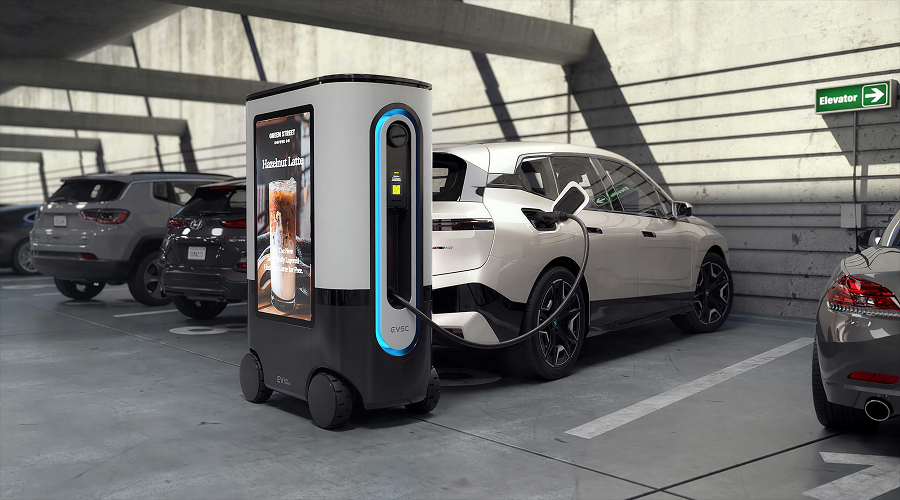
Expanding companies face unique challenges when electrifying their operations and infrastructure. Unlike established enterprises with predictable usage patterns, growing businesses must navigate evolving charging needs while maintaining flexibility for future expansion. Planning effectively requires selecting systems that accommodate current requirements while providing clear upgrade pathways.
Working with an experienced EV charging manufacturer allows businesses to implement future-proof solutions that scale alongside their growth trajectory without necessitating complete system replacements.
Understanding Scalability Dimensions

Scalability in EV charging infrastructure extends beyond simply adding more charging points:
- Power distribution scalability – The ability to increase electrical capacity without redundant construction
- Software management scalability – User accounts, billing systems, and monitoring capabilities that accommodate growing user bases
- Physical expansion capabilities – Site designs that allow for additional chargers without reconfiguring existing installations
- Network integration flexibility – Compatibility with evolving communication protocols and payment systems
The most successful implementations consider all four dimensions simultaneously rather than focusing exclusively on hardware expansion.
Starting Small Without Limiting Future Growth
Oversize conduit and electrical panels – Installing larger conduit and electrical infrastructure than immediately needed typically adds only 8-12% to initial costs while eliminating expensive retrofitting
1. Deploy modular systems – Select charging hardware with modular power components that allow incremental capacity increases
2. Reserve physical space – Designate and prepare additional parking areas for future expansion, even if not immediately equipped
3. Plan for power upgrades – Coordinate with utility providers on multi-phase electrical service enhancements
These strategies create cost-effective growth pathways that prevent the “rip and replace” cycle that plagues many early adopters.
Load Management Strategies for Optimized Scaling

Intelligent power management significantly improves charging infrastructure economics:
- Dynamic load balancing – Automatically distributes available power across multiple vehicles based on charging needs and priorities
- Peak-shaving capabilities – Reduces maximum power draws to minimize demand charges and infrastructure requirements
- Time-shifted charging – Schedules charging sessions during off-peak periods when vehicles remain connected for extended periods
- Vehicle-specific optimization – Adjusts charging parameters based on specific vehicle battery characteristics
Implementing sophisticated load management can effectively double the number of vehicles served by a given electrical service capacity.
Critical Software Considerations
The software platform managing charging infrastructure often determines scalability limitations more than hardware specifications:
- User account scalability – System capacity for managing growing numbers of drivers, vehicles, and access credentials
- API flexibility – Integration capabilities with evolving business systems including fleet management and facility operations
- Data analysis capabilities – Reporting tools that identify usage patterns and guide expansion decisions
- Remote management features – Ability to monitor and control distributed charging locations from centralized operations
Businesses should evaluate software platforms based on growth accommodation capabilities rather than solely on current feature sets.
Phased Implementation Models

Successful growing businesses typically deploy charging infrastructure in deliberate phases:
1. Pilot deployment (2-5 chargers) – Validates assumptions about usage patterns and establishes operational processes
2. Core infrastructure establishment (5-15 chargers) – Creates standardized designs and procedures while serving early adoption
3. Systematic expansion (15+ chargers) – Scales based on documented usage data and forecasted growth requirements
Each phase should incorporate learnings from previous deployments while maintaining consistency in user experience and management systems.
Real-World Expansion Metrics
Actual usage data provides valuable benchmarks for planning scalable implementations:
- Average utilization increases of 18-22% annually for the first three years following initial deployment
- Typical charging session duration decreases by approximately 15% yearly as battery technologies improve
- Power delivery requirements increase approximately 10-12% annually as vehicles with larger battery capacities enter fleets
- Infrastructure management complexity grows exponentially beyond 25 charging points without advanced management systems
Understanding these patterns helps businesses anticipate expansion needs and avoid costly miscalculations in system design.
Financial Planning for Phased Growth
Budgeting for scalable charging infrastructure requires distinct approaches from traditional capital investments:
- Incremental funding models – Establishing multi-year budget allocations rather than one-time capital expenditures
- TCO-based evaluation – Assessing total cost of ownership across projected growth periods rather than initial installation costs
- Operational vs. capital expense strategies – Evaluating subscription-based charging services against ownership models
- Incentive optimization – Structuring deployments to maximize available rebates and tax incentives across multiple fiscal years
Businesses that establish dedicated multi-year charging infrastructure budgets consistently achieve more cost-effective scaling than those treating each expansion as a separate project.
Integration with Broader Business Systems
As charging infrastructure grows, integration with other operational systems becomes increasingly important:
- Energy management systems – Coordinating charging with overall facility energy consumption
- Building management systems – Incorporating charging status into facility dashboards and controls
- Employee/visitor management – Synchronizing access credentials and billing systems
- Fleet management platforms – Sharing charging data with vehicle maintenance and routing systems
Advanced integrations typically become essential once businesses exceed 10-15 charging ports, as manual coordination becomes unsustainable.
Case Example: Distribution Company Growth Path
A distribution company’s three-year infrastructure evolution demonstrates effective scaling approaches:
- Initial deployment: 4 Level 2 chargers supporting 8 company vehicles with simple access controls
- First expansion: Addition of 6 chargers with load management system implementation, supporting 18 vehicles
- Second expansion: Integration of 2 DC fast chargers alongside existing AC infrastructure for quick-turnaround vehicles
- Current state: Comprehensive system of 22 managed charging points supporting 45 vehicles with automated reporting and billing
This phased approach maintained consistent operations while accommodating 462% growth in charging capacity within their original electrical service constraints.
Avoiding Common Scaling Pitfalls
Growing businesses often encounter predictable challenges when expanding charging infrastructure:
- Underestimating electrical service upgrade lead times (typically 3-8 months depending on location)
- Selecting incompatible equipment that creates management silos between deployment phases
- Failing to document infrastructure decisions, creating knowledge gaps during personnel changes
- Overlooking networking requirements for distributed charging locations
- Neglecting to establish standard operating procedures during initial deployments
Organizations that document charging infrastructure decisions and standardize equipment specifications avoid costly compatibility issues during expansion.
Future-Proofing Considerations
Emerging technologies impact long-term infrastructure planning for growing businesses:
1. Vehicle-to-grid capabilities – Incorporating bidirectional charging readiness into future plans
2. Wireless charging compatibility – Evaluating physical space requirements for eventual contactless systems
3. Higher power delivery standards – Ensuring electrical infrastructure accommodates increasing charging speeds
4. Mobile charging integration – Preparing for deployable charging solutions for temporary needs
While not all emerging technologies will achieve widespread adoption, awareness of potential developments informs better current decision-making.
The scalability challenges facing growing businesses require thoughtful planning that balances immediate functionality against future adaptability. Organizations that implement modular, standards-based systems with clear expansion pathways avoid the costly “rip and replace” cycle that undermines charging infrastructure ROI. By approaching EV charging as a strategic platform rather than a point solution, growing businesses create sustainable competitive advantages while managing costs effectively across their growth trajectory.






